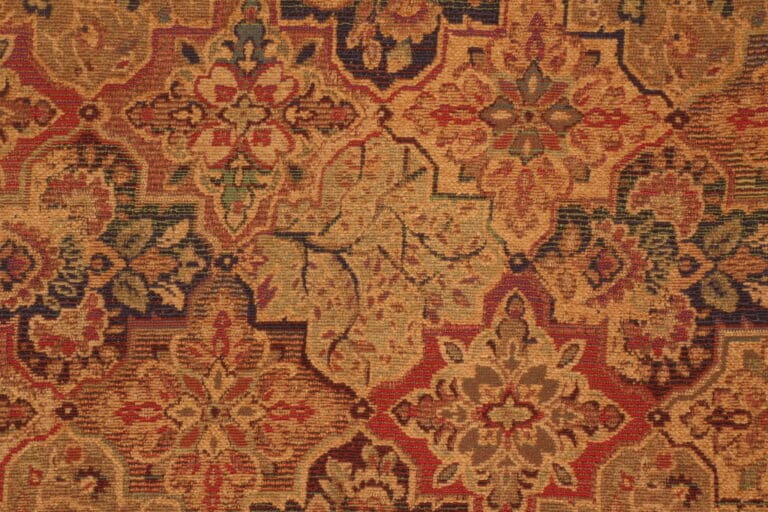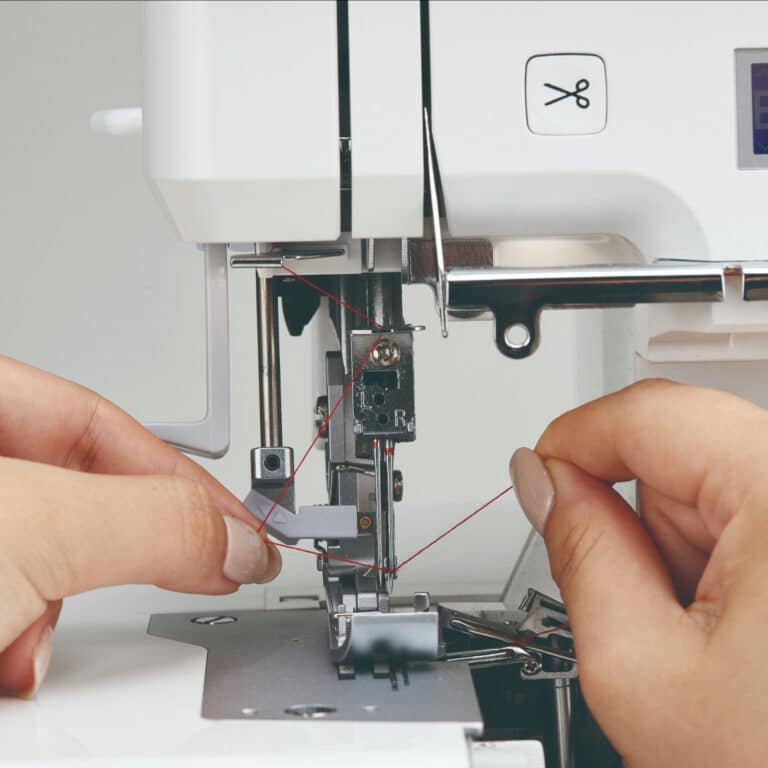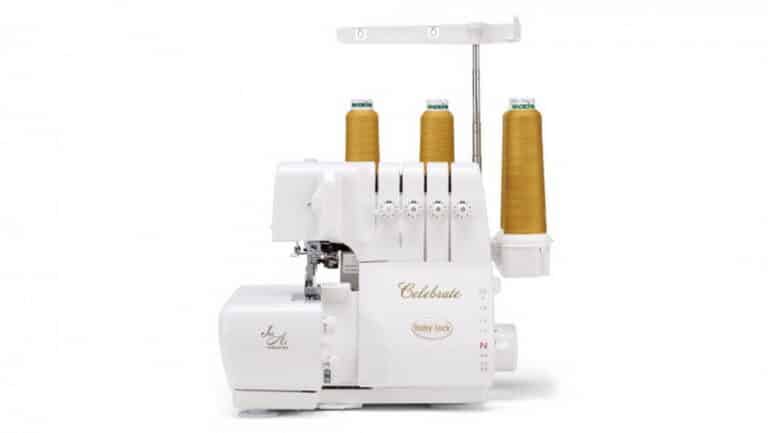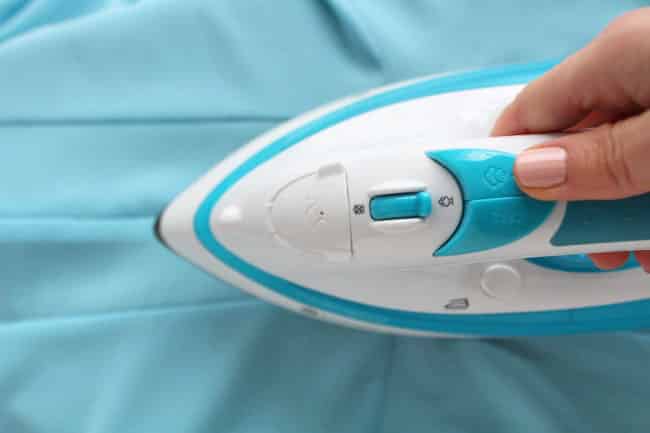How Big Is a Yard of Fabric: Why Measurements Matter for Your Sewing Projects
Choosing the right amount of fabric makes or breaks a sewing or quilting project. Every project calls for attention to detail, especially when you’re figuring out fabric measurements and picking the right size.
The range of fabric widths—think quilting cotton or sheeting—can make things tricky.

Most fabric shops sell by the yard, but the width changes depending on the type. If you know how to measure fabric in yards, inches, centimeters, or meters, shopping for fabric feels less stressful and more enjoyable.
Once you have these basics down, buying fabric gets a lot less intimidating.
Table of Contents
- 1 How Big Is a Yard of Fabric?
- 2 Exploring the Various Fabric Yard Measurements
- 3 Inches in a Yard of Fabric
- 4 Yard to Meter Fabric Conversion
- 5 Understanding the Length of a Yard of Fabric in Centimeters
- 6 Fabric Widths and What to Expect
- 7 Choosing Fabric by Size: Is Width Adjustable?
- 8 How a Fabric Yard Appears
- 9 What to Expect When Buying Fabric by the Yard
- 10 Simple Ways to Measure a Yard of Fabric
- 11 Fabric Yard Length and Width Guide
- 12 Frequently Asked Questions
- 12.1 How do you convert a yard of fabric to centimeters?
- 12.2 What is the usual length of a yard of fabric in inches?
- 12.3 How can someone change the size of a yard of fabric into meters?
- 12.4 What would half a yard of fabric measure in meters?
- 12.5 How does the size of one yard of fabric compare to two yards?
- 12.6 What is the best way to measure a yard of fabric at a shop?
Key Takeaways
- A yard of fabric always measures 36 inches long, but width varies.
- Knowing fabric measurements makes sewing and quilting easier.
- Measuring and buying fabric the right way ensures a good fit for your project.
How Big Is a Yard of Fabric?
Measuring a yard of fabric seems simple, but there’s more to it. A yard is always 36 inches long, or three feet—easy enough.
The width varies a ton based on the fabric type and how it’s rolled or folded. This width changes how much area you actually get.
Fabric widths usually fall anywhere between 36 and 60 inches, sometimes wider. Linen, for instance, often comes in 54-inch widths.
So, a yard might mean a piece that’s 36 inches long and, for linen, 54 inches wide. That’s a pretty generous chunk of fabric.
Here’s a quick comparison for reference:
| Unit | Length | Width (example: linen) | Area (square inches) |
|---|---|---|---|
| 1 yard | 36 in | 54 in | 1,944 sq in |
| 1 yard | 36 in | 44 in | 1,584 sq in |
| 1 yard | 36 in | 60 in | 2,160 sq in |
The actual width depends on the specific type and brand of the fabric.
People used to measure with their arms or thumbs, which, honestly, sounds like chaos. Now, measurement standards make things much easier for anyone buying fabric—linen, cotton, polyester, you name it.
To get the right amount, always consider both length and width. Check the width on the label every time you shop.
This really affects how much fabric you end up with. Some folks love wider fabric for quilts or curtains, while others stick with standard widths for clothing.
If you try to picture a yard, just think of a piece three feet long, like a yardstick. But to know the real “size” of a yard of fabric, you’ve got to factor in the width too.
For more details, check out this fabric yard size and dimensions guide.
Just remember: always think about both directions before you buy.
Exploring the Various Fabric Yard Measurements
If you love sewing, quilting, or just dabbling in craft projects, getting familiar with different fabric cuts really helps. Knowing how much you need makes shopping simpler and keeps leftovers to a minimum.
Each cut has its own perks and fits certain projects. Here’s a closer look at the most common ways shops cut and sell fabric.
Standard Straight Yard
When you buy a standard straight yard, the shop measures along the length, following the selvage edge. This is what you’ll see most often in stores.
A straight yard is always 36 inches long, but the width? That can be anywhere from 33 to 44 inches, sometimes more. This size works great for big projects, clothes, or home decor—plenty of room for pattern pieces.
If you want more on fabric widths, check out this overview of typical yard dimensions.
Continuous Length Yard
When you ask for more than one yard, shops usually cut a continuous piece. So, if you buy three yards, you get one long piece, not three separate ones.
This is a lifesaver for bigger projects or keeping patterns lined up.
Three-Fourths Yard Cut
A three-fourths yard cut is 27 inches long, with the full fabric width. Quilters and crafters like this size for tote bags or baskets.
It’s flexible for piecing quilt blocks and doesn’t leave you with too much leftover fabric.
Quick Reference Table:
| Cut | Length (inches) | Common Width (inches) |
|---|---|---|
| Three-Fourths Yard | 27 | 44 |
| Two-Thirds Yard | 24 | 44 |
| Half Yard | 18 | 44 |
| Fat Quarter | 18 | 21–22 |
| One-Eighth Yard | 4.5 | 44 |
Two-Thirds Yard Length
The two-thirds yard cut measures 24 inches. Paired with standard width, it’s perfect for borders or trims when a half yard isn’t quite enough.
Crafters love this for finishing projects that need just a bit more fabric.
Half Yard Section
A half yard is 18 inches long, cut across the width. It’s super popular for patchwork or kids’ clothes.
This cut is easy to fold, store, and use—handy to have around for staple colors or patterns.
Generously Sized Fat Quarter
A fat quarter is a favorite among quilters. Instead of a skinny strip, it’s a squarish piece, usually 18 by 21 or 22 inches.
Fat quarters give you more usable space for cutting shapes or working with big quilt blocks. They’re fun to collect in all kinds of prints.
If you want versatility without a lot of waste, fat quarters are tough to beat. Learn more about them here.
Small One-Eighth Yard Piece
The smallest common pre-cut fabric is the one-eighth yard, 4.5 inches long by the full width. It’s ideal for details, borders, or small piecing.
For tiny crafts or quilt sashing, this size gives you just enough without cluttering your space with scraps.
Inches in a Yard of Fabric

Measuring fabric is crucial for sewing and crafts. Knowing the exact inches in each cut makes planning way easier.
Here are some quick breakdowns for common lengths, using a yard as the starting point.
Quarter Yard: How Many Inches?
Use a quarter yard for small projects and accents. Since a yard is 36 inches, a quarter yard comes out to 9 inches long—just right for quilt blocks or little sewing details.
| Yard Fraction | Length (inches) |
|---|---|
| 1/4 yard | 9 inches |
Half Yard: Inches in Half a Yard of Fabric
Half yard cuts are super common. Just divide 36 inches by 2, and you get 18 inches. That’s perfect for pillowcases, linings, or panels.
- ½ yard = 18 inches
- Easy math: 9 inches (¼ yard) + 9 inches (¼ yard) = 18 inches (½ yard)
Double Yard: How Many Inches in Two Yards?
Need more than a yard? Double it—36 inches x 2 = 72 inches. This works for dresses, curtains, and big crafts.
- 2 yards = 72 inches
- Twice the standard cut for large projects
Yard and a Half: Inches Measurement
Sometimes patterns call for a yard and a half. Add 36 inches (one yard) and 18 inches (half yard) for a total of 54 inches. Great for skirts, shams, and table runners.
- 1 yard (36 inches) + ½ yard (18 inches) = 54 inches
Square Inches in One Yard of Fabric
Calculating square inches helps with patchwork and home decor. Multiply the yard length (36 inches) by the fabric’s width. Quilting cotton is usually 44 inches wide.
Example:
- 36-inch length x 44-inch width = 1,584 square inches
- Wider fabric? For 60 inches, you get 2,160 square inches.
| Length (inches) | Width (inches) | Total Area (square inches) |
|---|---|---|
| 36 | 44 | 1,584 |
| 36 | 60 | 2,160 |
Knowing the area makes planning for pattern pieces or quilt blocks easier.
Feet Contained in a Yard of Fabric
Feet and yards come up a lot. There are 12 inches in a foot, so a yard (36 inches) equals 3 feet. That’s handy for quick math in the store.
- 1 yard = 36 inches = 3 feet
Square Feet: Area in One Yard of Fabric
If you want to use feet instead of inches, just convert. For example, a 60-inch-wide fabric is 5 feet wide (60 divided by 12). The yard is already 3 feet long.
- Length = 3 feet
- Width = 5 feet
- 3 feet x 5 feet = 15 square feet
| Length (feet) | Width (feet) | Area (square feet) |
|---|---|---|
| 3 | 5 | 15 |
Always check the width before you calculate. Not every fabric is the same!
If you want more charts and conversion tips, check out this overview of fabric sizes and yard conversions and this fabric size chart.
Yard to Meter Fabric Conversion
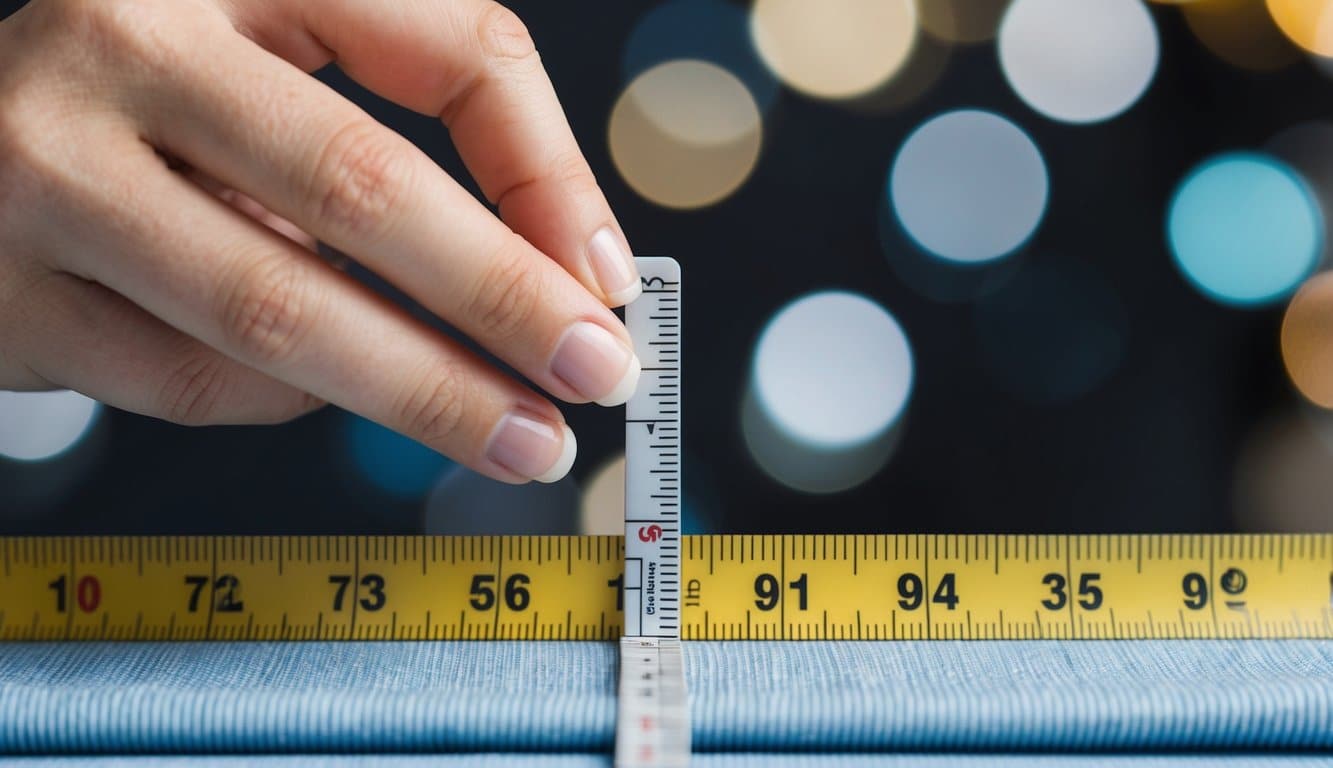
Ever wonder how a yard stacks up against a meter? The U.S. sticks with yards, but most of the world uses the metric system. Metric is built on tens, so it’s easy to work with—especially for sewing.
A yard is a bit shorter than a meter. One yard equals exactly 0.9144 meters. That number’s been set for ages and everyone uses it, from hobbyists to pros.
Here’s a quick table:
| Yards | Meters |
|---|---|
| 1 | 0.9144 |
| 2 | 1.8288 |
| 3 | 2.7432 |
| 5 | 4.572 |
| 10 | 9.144 |
The metric system’s decimals make sewing calculations easier, especially for beginners. If you shop online or travel, knowing the yard to meter conversion is really useful.
Understanding the Length of a Yard of Fabric in Centimeters
It helps to know that one yard is just under a meter. A meter is 100 centimeters. Since a yard is 0.9144 meters, that’s 91.44 centimeters.
Here’s a quick table:
| Fabric Length | Measurement in Centimeters |
|---|---|
| 1 yard | 91.44 cm |
Keep this number in mind when you’re planning projects or sorting craft supplies. Some people round up to 90 cm for speed, but the real figure is 91.44 centimeters.
For more details and a calculator, check this fabric guide.
Fabric Widths and What to Expect
Fabric width varies a lot, depending on what it’s meant for. Sheeting and curtain fabric can be super wide—sometimes up to 110 inches. That’s great for bedding or drapes, since fewer seams mean a cleaner look.
Quilting cotton usually comes in at about 44 inches wide. That’s narrower, but it makes sense for quilters who don’t need the extra width. Clothing fabrics—think gingham, poplin, or denim—usually range from 48 to 72 inches wide. Some specialty fabrics, like Indian silks, can be as narrow as 42 inches.
Typical Fabric Widths
| Fabric Type | Common Width (inches) |
|---|---|
| Quilting cotton | 44 |
| Apparel fabrics | 48–72 |
| Sheeting/curtains | Up to 110 |
| Indian silk | 42 |
Fabric is measured from selvage to selvage—those tightly woven edges along the length. The width you get is the distance between them.
When you buy fabric, a yard-long piece gives you way more material if it’s wide. For example, a yard that’s 72 inches wide covers a lot more than one that’s only 42 inches wide.
Always check the width before you buy. For more, see this fabric size chart.
Choosing Fabric by Size: Is Width Adjustable?
Stores always sell fabric by length—yard, half-yard, whatever—but the width is set by the manufacturer. Most bolts or rolls show the width on the label: 36, 44, 54, or 60 inches are common, but not every fabric comes in every width.
If your project needs a certain width and the fabric doesn’t come that way, you’ll need to get creative. For example, if the only option is 36-inch width but you need 60 inches, you’ll have to sew two pieces together. That’s pretty normal for big projects like curtains or tablecloths.
Length is way more flexible. You can order whatever you want—one yard, two and a half, even just half a yard.
| Fabric Term | What It Means |
|---|---|
| Width | The fixed distance (side to side) of the fabric roll or bolt |
| Length | The measured yardage or inches you purchase from the store |
| Yard | 36 inches of fabric length, whatever the width happens to be |
So, you can’t really change the width, but you can get whatever length you need. If you want a wider piece, joining fabric is the way to go.
How a Fabric Yard Appears
When you cut a yard from a bolt, you get 36 inches long. If the width is about 42 inches, it looks like a wide rectangle. That’s the usual shape for things like a roman shade or a daybed cover.
| Length | Width | Typical Use |
|---|---|---|
| 36 in | 42 in | Roman shade, daybed cover |
The rectangle shape stays the same, even if the width changes.
What to Expect When Buying Fabric by the Yard
Fabric prices per yard can swing a lot, depending on the type and where you shop. Most everyday cottons and basics range from $2 to $15 per yard. Discount stores or lesser-known brands usually cost less.
Designer or specialty fabrics can hit $50 or more per yard, especially if you’re after something unique or imported.
- Quality: Higher-quality or designer fabric costs more.
- Fabric Type: Special or unique fabrics get priced higher.
- Store and Location: Big-city shops might charge more than small-town stores.
- Online vs. In-Store: Online giants sometimes have exclusive or pricier options, but deals pop up with smaller sellers.
| Fabric Type | Common Price Range |
|---|---|
| Basic Cotton | $2 – $15 per yard |
| Designer/Specialty | $20 – $50+ per yard |
| Discount Fabric | Under $5 per yard |
Look for sales or end-of-line deals—online or in person—to stretch your budget. Shopping around really pays off when you’re searching for the best value. For up-to-date options and prices, check out Walmart’s fabric by the yard selection.
Simple Ways to Measure a Yard of Fabric
Measuring a yard of fabric is easy with a little care and the right tool. Use a tape measure or yardstick—both show inches and feet so you can’t really go wrong.
Make sure your measuring tool is at least 36 inches or 3 feet long. Lay the fabric flat on a hard, clean surface—a kitchen table works great.
Unroll enough fabric so it lies smooth. Focus on the length—the width doesn’t matter for this step.
Line up one end of your tape or stick with the fabric’s edge. Stretch the fabric out to the 36-inch mark. Keep it flat and don’t pull or twist.
Honestly, working on a smooth surface keeps things straight, and a clear measuring tool makes it faster. With these steps, you’ll measure a yard just right. For more on sizing, see this fabric size chart.
Fabric Yard Length and Width Guide
If you’re sewing, knowing fabric measurements is a must. Stores sell fabric by the yard (length), but width varies. Here’s a quick chart for common yard lengths, inches, and centimeters.
| Yard Fraction | Inches | Centimeters |
|---|---|---|
| 1/4 yard | 9 | 22.9 |
| 1/2 yard | 18 | 45.7 |
| 1 yard | 36 | 91.4 |
Always double-check the width before buying to make sure it’s the right fit. A little extra is better than running short. For more, see this handy chart on fabric conversion.
Frequently Asked Questions
How do you convert a yard of fabric to centimeters?
A yard of fabric equals 91.44 centimeters. Since one yard is 36 inches and one inch is 2.54 cm, just multiply 36 by 2.54. This is handy when you’re working with metric patterns.
What is the usual length of a yard of fabric in inches?
One yard is always 36 inches long. That’s measured along the selvage edge. Width can change, but length stays at 36 inches. Makes fabric shopping a lot easier.
How can someone change the size of a yard of fabric into meters?
To convert yards to meters, remember that one yard is about 0.9144 meters. Multiply your yards by 0.9144 to get meters—super useful for metric patterns.
| Yards | Meters |
|---|---|
| 1 | 0.9144 |
| 2 | 1.8288 |
What would half a yard of fabric measure in meters?
Half a yard is 18 inches, or about 0.4572 meters. Just divide 0.9144 (one yard in meters) by two. Handy for small projects or samples.
How does the size of one yard of fabric compare to two yards?
One yard is 36 inches (0.9144 meters) long. Two yards doubles that—72 inches (1.8288 meters). Width doesn’t change unless you pick a different fabric. Two yards is perfect for bigger projects.
| Yards | Inches | Centimeters | Meters |
|---|---|---|---|
| 1 yard | 36 | 91.44 | 0.9144 |
| 2 yards | 72 | 182.88 | 1.8288 |
What is the best way to measure a yard of fabric at a shop?
To measure a yard at the store, use the ruler or tape at the cutting table. Start at the edge and measure out 36 inches. Make sure the fabric’s smooth and straight for best results. If you’re not sure, just ask a store employee—they’ll usually help out.


